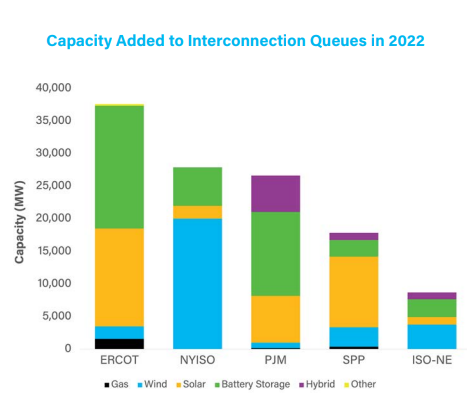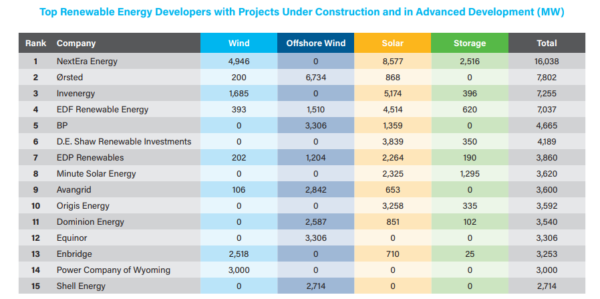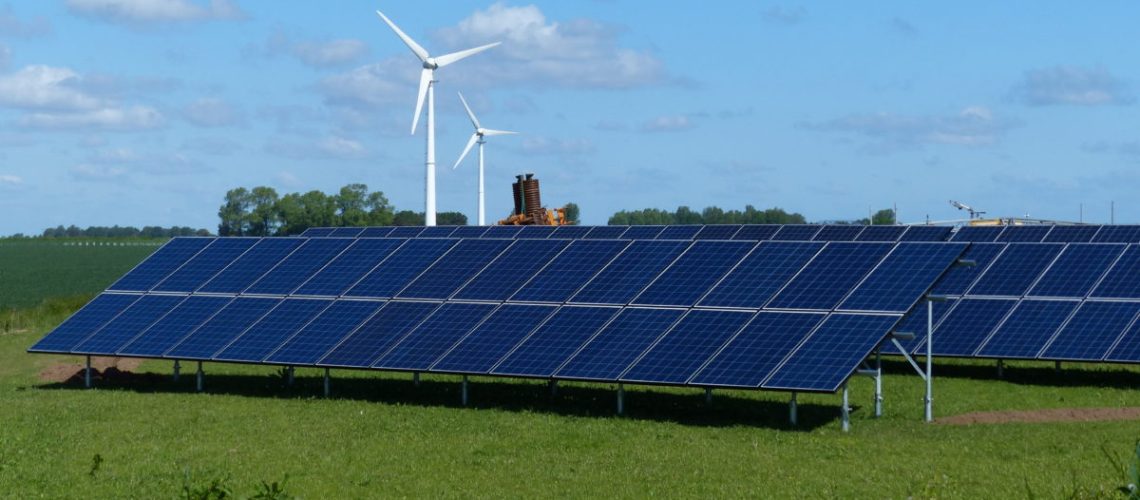The American Clean Power Q3 report has been released. The organization lifted long-term deployment targets to much higher levels following the signing of the Inflation Reduction Act.
In the American Clean Power Association (ACP) Q3 2022 market insight report, much optimism is expressed in light of the passage of the Inflation Reduction Act (IRA), which contains $370 billion in spending for climate and energy measures. ACP is a leading federation of renewable energy companies.
ACP projects that the United States may deploy 550 GW of new renewable energy projects by 2030. Solar, wind, and energy storage capacity will help pave the way for the nation to cut economy-wide emissions by 40% below 2005 levels. This progress will be accomplished by a clean power workforce of 1 million, said ACP.
Despite this optimism, there have been some near-term challenges for the industry to overcome. The ongoing ripples of supply issues due to COVID-19, anti-circumvention investigations, interconnection issues, Uyghur forced labor crackdowns, and rising shipping costs have made it increasingly difficult to deliver projects this year.
ACP reports clean power installations in Q3 were the lowest in a third quarter since 2019, with 3 to 4 GW brought online. This brings cumulative installations to 14.2 GW. These projects represent $4.6 billion in capital investment and the electricity demand equivalent of nearly 500,000 homes. Year-to-date installations are down 18% compared to last year’s deployment figure, and Q3 deployment was 22% lower year-over-year.
Project delays still persist, and the report said as much as 14.2 GW of capacity has been delayed this quarter, more than half of which has already been delayed in preceding quarters. In total, ACP said 36.2 GW of renewable energy projects are suffering delays, while 3.5 GW has been cancelled altogether. Solar accounts for 63% of delayed projects, while land-based wind accounts for 23% of delays and battery storage the remaining 14%.
California led deployments with 1.4 GW installed, followed by Texas (1.27 GW), and Virginia (255 MW), and Iowa (105 MW). No other state activated more than 100 MW this quarter, said ACP.
Solar led the way in deployments with nearly 1.9 GW installed, bringing 2022 solar installations to over 7 GW. Battery energy storage deployment continues to grow precipitously, with 1.2 GW / 2.8 GWh rolled out. Only two wind projects were commissioned, combining for 356 MW in capacity this quarter.
Currently 132 GW of clean power capacity is in development across the nation, said the report. Included in this is 39 GW under construction and 93 GW in the advanced stages of development. Project pipelines grew three to four percent in Q1 and Q2, a fraction of the 12% quarterly growth witnessed in 2021. Q3 continued this same diminished trend, with project pipelines growing only 3%.

The makeup of the nation’s project pipeline is 59% solar, 30% wind, and 11% battery energy storage. Land-based wind contributes 17% to the total while offshore wind represents 11% of the nation’s clean energy project pipeline capacity.
Texas has the largest pipeline by a good measure, with nearly 24 GW of projects planned. California follows with 12.8 GW of queued projects, nearly all of which are hybrid solar and storage co-located projects. New York follows with 10.8 GW planned, 4.3 GW of which will be supported by offshore wind projects. The largest three developers in terms of capacity were NextEra Energy, Ørsted, and Invenergy.

Procurement has slowed, too. ACP said power purchase agreements (PPA) have been announced to the tune of 7.2 GW in Q3. This is 31% lower than last year’s third quarter. However, PPA announcements lag last year’s rate by only 3% due to high volume last quarter. Commercial and industrial customers represented 43% of PPA announcement capacity, while utilities represented about 25%, and undisclosed purchasers contributed the remaining 32%.
Solar was the clubhouse leader in PPA announcements, representing 90% of the capacity procured in-quarter and 81% year-to-date. Storage accounts for 7% of PPA announcements, and wind power the remaining 3%.
“President Biden signed the Inflation Reduction Act (IRA) into law on August 16th. This unprecedented national commitment to clean power is the largest policy investment in clean energy on record. The IRA is set to catalyze clean energy growth, ultimately more than tripling annual installations of wind, solar, and battery storage by the end of the decade,” said the report.



